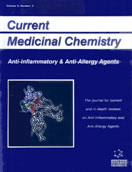Abstract
The aim of the current article is to overview the recent developments in the field of inflammation, as it relates to the roles of nitric oxide (NO) and peroxynitrite in the pathogenesis of this condition. The first part of the review focuses on the roles of NO and peroxynitrite, a reactive oxidant produced from the reaction of NO and superoxide. The second part of the review deals with the novel findings related to the recently identified regulatory roles of the inducible isoform of nitric oxide synthase (iNOS) in the expression of pro-inflammatory mediators in inflammation. Reactive oxygen species can initiate a wide range of toxic oxidative reactions. These include initiation of lipid peroxidation, direct inhibition of mitochondrial respiratory chain enzymes, inactivation of glyceraldehyde-3phosphate dehydrogenase, inhibition of membrane sodium / potassium ATP-ase activity, inactivation of membrane sodium channels, and other oxidative modifications of proteins. All these toxicities are likely to play a role in the pathophysiology of inflammation. Reactive oxygen species (e.g., superoxide, peroxynitrite, hydroxyl radical and hydrogen peroxide) are all potential reactants capable of initiating DNA single strand breakage, with subsequent activation of the nuclear enzyme poly (ADP ribose) synthetase (PARS), leading to eventual severe energy depletion of the cells, and necrotic-type cell death. Recently, it has been demonstrated that iNOS inhibitor prevents the activation of poly (ADP ribose) synthetase, and prevents the organ injury associated with inflammation. Although the severity and duration of inflammation may dictate the timing and extent of NOS expression, it is now evident that the upregulation of NOS can take place during sustained inflammation. Pharmacological inhibition of iNOS or genetic inactivation of NOS (iNOS knockout mice) attenuates the activation of the transcription factors nuclear factor kappa B (NFKB) and Signal Transducer and Activator of Transcription 3 (STAT3), and ameliorates the increases in G-CSF messenger RNA levels in the tissue. Thus, induced nitric oxide, in addition to being a “final common mediator” of inflammation, is essential for the upregulation of the inflammatory response. Furthermore, a picture of a pathway is evolving that contributes to tissue damage both directly via the formation of peroxynitrite, with its associated toxicities, and indirectly through the amplification of the inflammatory response.
Keywords: toxicities, G-CSF messenger RNA, ADP ribose, iNOS inhibitor
 2
2

